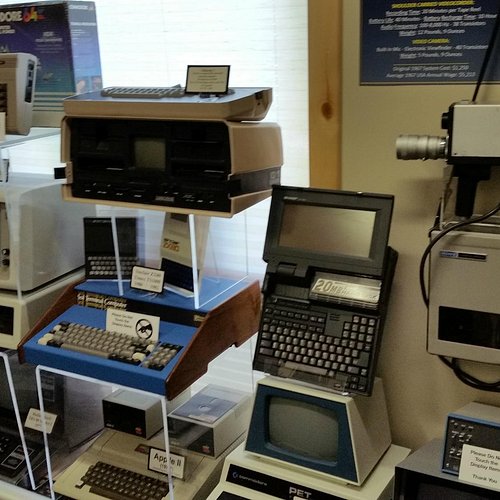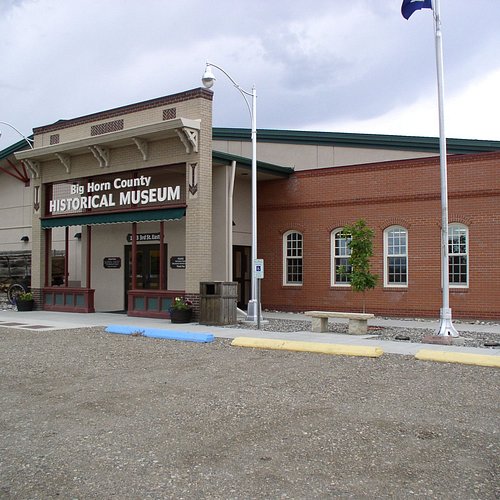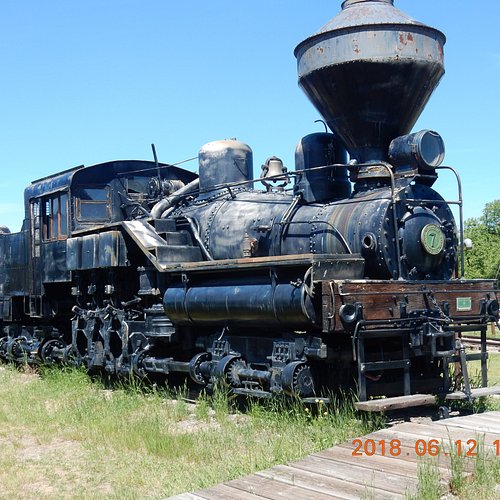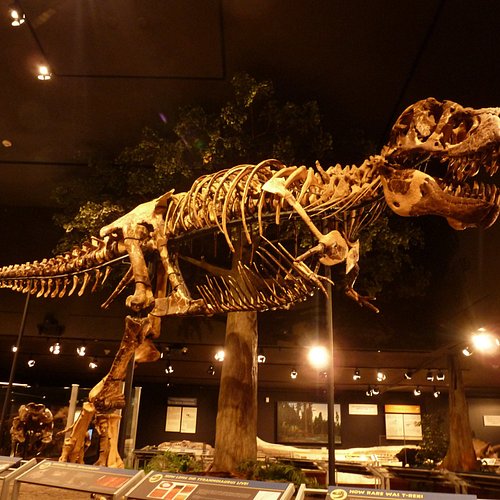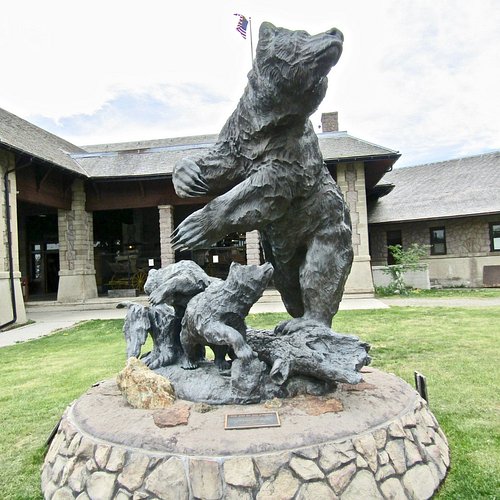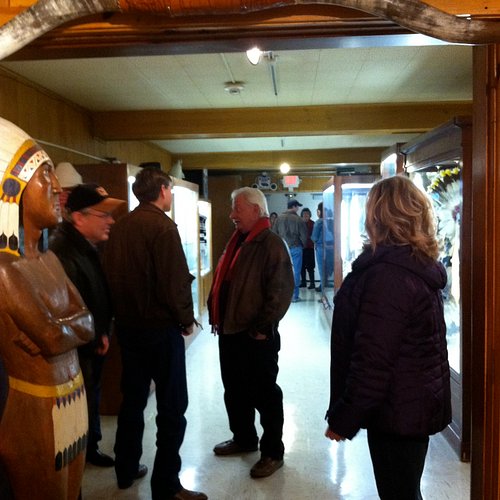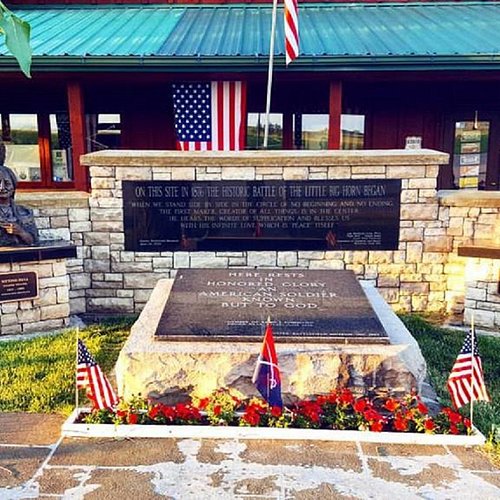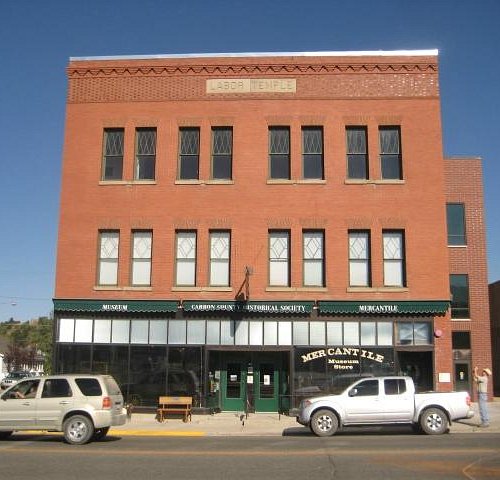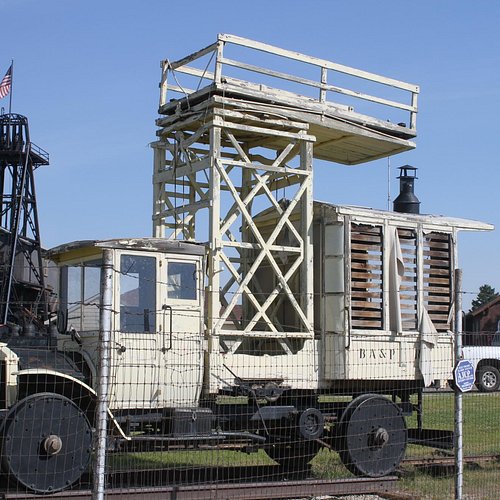What to do and see in Montana, United States: The Best History Museums
No matter where you look in Montana, you’ll find unspoiled nature, charming small towns and relaxing hospitality. Explore Glacier and Yellowstone National Parks, then hit the road to discover more natural wonders. You can hike, bike or horseback ride through rugged mountain landscapes, fly-fish blue ribbon trout streams, paddle scenic rivers and lakes, or spend winter days carving fresh powder at ski resorts — then end your day wandering a vibrant main street or relaxing in a cozy lodge.
Restaurants in Montana
1. American Computer & Robotics Museum
Overall Ratings
5.0 based on 277 reviews
Visit the American Computer & Robotics Museum and find out why distinguished Harvard scientist Edward O. Wilson described us as, “Inch for inch, the best museum in the world.” $7.50 for Adults, $4 for Youth and Seniors. Located in beautiful Bozeman, Montana, the ACRM is the oldest continuously operating museum devoted to the history of the Information Age and Computing. Our exhibits span 4,000 of human innovation, from original cuneiform tablets to the first personal computers, and include topics such as Artificial Intelligence, Quantum Computing, the Space Race, Cracking the Enigma Code, and more.
Reviewed By patrickbN3884CK - Minneapolis, United States
If you’re looking for hard to find, one of a kind historical computer artifacts, this is definitely the place to go. An apple I, first generation IBMs, a Turing Machine. They even had an enigma machine. How the heck do they have an enigma machine?!? Working in software, It was so good to witness so many people that have shaped our lives today.
2. Big Horn County Historical Museum
Overall Ratings
5.0 based on 64 reviews
The Big Horn County Historical Museum has been showcasing the area's rich western history since 1979. The 35 Acre complex has 24 restored historical buildings arranged in a beautiful setting, all containing period items. Two barns are filled with restored tractors, cars and trucks. Two Exhibit buildings contain galleries, a gift shop, and a state visitor's center. There is a very large parking area that easily accommodates RV's, and picnic facilities. You can check out events and more information on our Facebook site: facebook.com/bighorncountymuseum
3. Fort Missoula Museum
Overall Ratings
4.5 based on 142 reviews
Located at one of Montana's first military posts, this museum houses rotating exhibits and devotes an entire wing to the 25th Infantry Bicycle Corps. A recreated Western town of the late 1800s takes visitors back in time to the days of carriage houses and homestead cabins.
Reviewed By georgecQ397DZ - Coeur d'Alene, United States
I grew up in Missoula and When I visit I always seem to want to go visit the Museum. From stories about Ghostly things seen on the grounds to just Montana History itself. Can't get enough of the place and theirs a lot to see if your a history buff.
4. Museum of the Rockies
Overall Ratings
4.5 based on 1,785 reviews
Museum of the Rockies at Montana State University is a Smithsonian Affiliate, recognized as one of the world's finest research and history museums. It is renowned for displaying an extensive collection of dinosaur fossils, including a T. rex skeleton! MOR delights visitors with changing exhibits from around the world, permanent indoor and outdoor regional history exhibits, planetarium shows, educational programs, insightful lectures, benefit events, and a museum store. The Museum Store sells healthy snacks such as juice, yogurt, nuts, and string cheese. Snack and beverage vending machines are located in the lower lobby. There are numerous cafes and restaurants nearby.
Reviewed By 866TaylorB - Chicago, United States
The Museum of the Rockies in Bozeman, Montana, preserves and tells the stories of Montana and the Northern Rocky Mountains, educating visitors about the region's rich history, which includes its paleontological roots. Located at 600 West Kagy Boulevard, it was founded in 1957. Its collections focus on the physical and cultural history of the Rocky Mountains and the people and animals who have lived there, dating back more than 500 million years. The museum houses the largest collection of dinosaur remains in the United States, possessing the largest Tyrannosaurus skull ever discovered, as well as the thigh bone of a Tyrannosaurus rex that contains soft-tissue remains. The museum's collections have grown to include 300,000 objects that cover more than 500 million years of history. In 1980, the museum acquired over 10,000 photographs and negatives from the heirs of Albert, Alfred and Chris Schlechten that chronicle the Bozeman and Yellowstone National Park areas over two generations, from 1905 until the late 1970s. Other permanent exhibits include: "Enduring Peoples," which chronicles the life of Native Americans on the Northern Plains and near the Rocky Mountains; "History of the Northern Rocky Mountain Region," whose inhabitants included Native Americans, fur traders, gold seekers and white settlers from the frontier days through World War II; the Living History Farm, which includes the Tinsley House, where costumed interpreters demonstrate life in a turn-of-the-century home; and the Taylor Planetarium, a 104-seat domed theater. The 100-year-old Tinsley House is preserved as a living history museum where visitors learn about the life of the Tinsley family and others who lived at the time. The house includes a functioning outhouse, water pump and kitchen where food typical of the time is sometimes prepared. The Tinsleys migrated west during the Civil War and worked in Virginia City, Montana, then relocated to the Gallatin Valley. The house was built in 1889 and provides an overview of homestead life in the 1800s in the Gallatin Valley. The newest addition to the complex, the $4 million, 20,000-square-foot Curatorial Center for the Humanities, will provide storage and curatorial space for the museum's humanities collection, which includes art and archaeological, historic, Native American and photographic items.
5. Conrad Mansion
Overall Ratings
4.5 based on 394 reviews
The Conrad Mansion Museum is located in Kalispell's east side residential area atop a bluff overlooking the valley and the Swan mountain range. The home sits on three landscaped acres,surrounded by a dry stone fence with iron gates. Six large annual flower beds and extensive ever-blooming perennial beds provide constant color during the summer season, with pruned hedges, evergreens, and spacious lawns serving as a lush background. MISSION To preserve and exhibit the 1895 Charles Conrad Family Estate through public tours, educational programs, and community events.
Reviewed By F9761MSpatb
Oh my gosh, this is the best historic home. Our tour guide Ginny did the best job of educating us on the history of the home and the interesting lives of the Conrad family. This is a must do!
6. Museum of the Yellowstone
Overall Ratings
4.5 based on 252 reviews
Museum on the history of transportation through Yellowstone National Park opened seasonally from May to October. Housed in the original 1909 Union Pacific Railroad Depot, the Museum features permanent and temporary collections telling the story of travel to Yellowstone and the town of West Yellowstone. Free walking tours of the historic center are available in the evenings during summer.
Reviewed By 743clarkg - Clarksville, United States
Glad we stopped in here, great information on the area, this museum used to be the railroad station way back in the day, very nicely restored with a lot of artifacts from that time and pictures of the way it looked, the staff is very knowledgeable, lots of history here, great place to explore
7. Yellowstone County Museum
Overall Ratings
4.5 based on 63 reviews
The mission of the Yellowstone County Museum is to collect, preserve, research, and interpret the natural history and diverse cultures of the Yellowstone Valley of Montana and the Northern Plains. We share this legacy through a full range of exhibits and educational programs for the enrichment of the cultural and intellectual life of our community.We make it our priority to keep the history personal and relatable. This history belongs to everyone and we're just the storytellers here at the Yellowstone County Museum
Reviewed By 866TaylorB - Chicago, United States
Since 1956, the McCormick cabin has served as an entrance to the Yellowstone County Museum in Billings, Montana. Located at 1950 Airport Terminal Circle, across from the Billings Airport, the cabin and museum have a mission to collect, preserve, research and interpret the natural history and diverse cultures of the Yellowstone Valley of Montana and the Northern Plains. Stories of Indian nations, cattlemen and pioneers are told inside a log cabin that dates to 1893. Learn of the cultures and traditions that make the museum so unique, ranging from handcrafted saddles to rare firearms to pioneer wagons to tribal bead work. The McCormick cabin once belonged to a pioneer family of the early days of Billings. Paul McCormick built the cabin in 1893 for his family. It was a center for festive gatherings and Thanksgiving dinners, holding from 60 to 70 guests. In 1947, it was sold to the Billings YMCA, then to Socony Vacuum Oil, then to the Billings community for use as a museum. It was moved to his current location and has watched over the Yellowstone Valley since 1956. Among the exhibits are a dazzling display of authentic tribal bead work featuring designs from Sioux, Blackfoot, Northern Cheyenne and Crow tribes, beautiful examples of traditional regalia dating to the 19th century from tribes across the nation, a collection of 19th and early 20th century weaponry, including heavy artillery, military weaponry and guns from the days of Calamity Jane and Jesse James and highlights of research done in and around the Billings area of Lewis & Clark's Corps of Discovery, which came through the Yellowstone Valley on its historic trek to the sea. Finally, see how Billings evolved from an unruly town of the wild west to a center of industry. If you are a history buff, this is truly educational.
8. Custer Battlefield Museum
Overall Ratings
4.5 based on 206 reviews
The Custer Battlefield Museum houses hundreds of Indian War Period artifacts and manuscripts related to Custer, Crazy Horse, Sitting Bull and the 7th Cavalry as well as the acclaimed photograph collection of D.F. Barry. Home to Sitting Bull's death mask and the gauntlets of George Custer, the museum and town sits where the Battle of the Little Bighorn began at Sitting Bull's Camp. Located in front of the museum is the Tomb of the Unknown Soldier, containing one of the first 7th Cavalry Casualties.
Reviewed By morrowcm - Seattle, United States
At first glance, I was wary to enter. It was early morning and I wasn't sure when I saw the building that I had it correct. The resounding positive reviews is what brought me inside and I am so glad it did. There are no cameras allowed inside so that's why there are no pictures on reviews. It was a very informative visit into the warriors who fought in the Battle of Little Big Horn. Great collections of photographs (Fred E. Miller and David F. Barry) and one-of-a-kind artifacts. The museum is quick off the interstate and I would highly recommend a visit if you have about 45 mins to spare in your travels.
9. Carbon County Historical Society and Museum
Overall Ratings
4.5 based on 32 reviews
Located in Red Lodge's historic Labor Temple Building, the Carbon County Historical Society and Museum is the county's central source for historic, genealogical, and archival information about Carbon County, Montana. The museum was first established in 1959 by Alice Greenough to house the collection of her world-renowned rodeo family. The Carbon County Historical Society was formed in 1974, and incorporated as a 501(c)3 nonprofit in 1975. In 1990, the three-story Labor Temple building was gifted to the Carbon County Historical Society by an anonymous donor. In 1909 the Labor Temple was completed in Red Lodge on the corner of 8th and Billings Ave (now Broadway). This four-story, 20,000 sq. ft. Labor Temple Building was constructed by the Red Lodge Miners Local No. 1771 for $36,000, using a quarter of a million bricks from the Fromberg brick yard. It once served more than 1,000 union miners in Carbon County. It was added to the National Register of Historic Places in 1983. The historical society received money through grants, and private donations to restore the main floor and basement. In June 1999, the Labor Temple once again opened its doors to the community as the county's museum. The historical society is in the process of raising funds to restore and renovate the top two floors, with a completion date goal of 2017.
10. World Museum of Mining
Overall Ratings
4.5 based on 396 reviews
Explore more than 50 structures, ranging from the 100 ft high headframe to the many buildings of Hell Roarin' Gulch, a turn of the century mining town. Displays and exhibits focus on mining and the related culture that made Butte, MT. The World Museum of Mining offers two mine tours. One takes you into the depths of the Orphan Girl mine and provides the history of mining, gives visitors the opportunity to see the Orphan Girl vein and is approximately 1.5 hours long. Get fitted with a miner's hard hat and lamp to experience life underground! The other tour is a Mine Yard tour. The guide walks you through the Mine Yard showing guests where miners started and ended their day. Space is limited and reservations are required. Reservations can be made on our website. The Museum is open seven days a week until the end of October with limited hours in November. Weather conditions may affect our ability to offer all services.
Reviewed By THINGS2LIVE4 - Rocky River, United States
You actually get to tour a mine that closed in the 1950s. This was an awesome unique industrial experience. Much of America was built by and wars were won by what was mined here. On top of the mine they built an old west town that kids would love.

